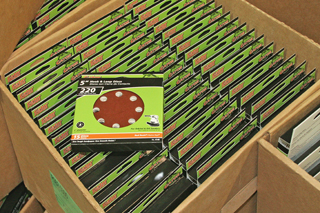
I’ve been using PSA (pressure sensitive adhesive) and hook-and-loop sandpaper discs on my random orbit sander and cursed both types. What are their advantages and disadvantages? Please give tips on their use: temperature, humidity. What are the do’s and don’ts? – George M. Gottfried
Tim Inman: PSA is usually the cheaper of the two systems you’ve mentioned. Hook-and-loop systems allow abrasives to be taken on and off several times. Most production shops use PSA, and they pitch the discs once removed from the sanders. Hook-and-loop discs will shed heat a bit better, so that is a plus, but not a strong one in my mind. Both systems beat the old days of cutting and hand clamping abrasives to platens. Everything has its troubles.
Chris Marshall: George, you don’t mention what particular difficulties you’ve had with either system. I can’t recommend remedies for PSA because I don’t use it on my sanders, but I haven’t experienced problems with hook-and-loop to drive me in the other direction. If what’s happening is the hook-and-loop discs are coming loose from your sander, it could be that the hook surface on the pad is worn down and the pad needs to be replaced. The hooks aren’t “hooking” effectively anymore. Or, dust and debris is trapped on the surface, and it needs a good going-over with a brush and an air compressor. Venturing a guess here, but if the PSA isn’t staying stuck, you might have the same problem, and the sander’s pad just needs cleaning with a mild solvent to remove adhesive residue.
I’ve seen both PSA and hook-and-loop disks curl over time. I suspect it’s influenced by humidity, but it might just be age. It’s best to store them flat or in their original packaging, if you can. Even when they curl a little bit, my discs still stay lay flat once they’re mounted on the tool.







